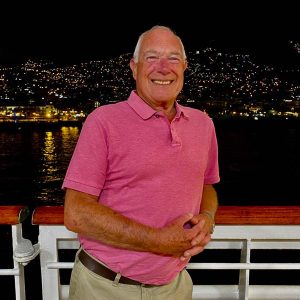The Plane or the Train
We’ve all been hooked on flying to foreign holiday destinations for so long that we might have missed the amazing expansion of high-speed trains that now criss-cross Europe. It’s easy to forget that a short 2 hour flight balloons to a 6 – 8 hour journey when all the queueing, waiting and transfers are taken into account.
 This May saw the latest innovation as the South of France became directly connected to London by high speed train as Eurostar’s new year-round rail service headed for the sun. Getting to France’s second city of Marseille, on the Mediterranean coast, has never been more convenient or accessible from London.
This May saw the latest innovation as the South of France became directly connected to London by high speed train as Eurostar’s new year-round rail service headed for the sun. Getting to France’s second city of Marseille, on the Mediterranean coast, has never been more convenient or accessible from London.
High speed rail routes keep opening across Europe and there’s a growing appetite among travellers to choose trains over planes for journeys across mainland Europe. New high speed routes have recently opened to Switzerland, Spain and Italy (with a change in Paris) and non-stop routes to Holland and Germany are on the cards.
St Pancras railway station
For us Brits everything starts at St Pancras railway station. It can be busy at peak times but never anything like the insanity and crushing confusion of the crowds and queues at our major airports.
Check-in, security and passport control takes around 15 minutes instead of two hours at the airport, there’s no half hour wait (x2) for your luggage and the journey is city centre to city centre, so no awful 20-25 mile bus transfer to and from airports. The 767 mile, six and a quarter hour rail trip to Marseille is spacious, comfortable but above all else it’s relaxing and hassle free.
 On board a Eurostar train
On board a Eurostar train
The Marseille train follows the usual Eurostar route towards Paris but skirts the city by going via Lille and Marne la Vallee-Chessy (Disney World Paris) before linking up with the main TGV routes south across France.
On this longer journey it can be worth paying extra for a Standard Premier ticket as the seats are larger and more comfortable than in Standard. In addition passengers are served two meals along with coffee and wine which adds to the experience. However, economy seats are still more spacious and comfortable than any airline offers, and there’s an onboard cafe carriage but unlike flying there’s no problem if you want to bring your own picnic and drinks for the journey.
Accessibility
Wheelchair users are well catered for on Eurostar, they’ll reserve a dedicated wheelchair passenger space for you, either in Standard Premier or Business Premier carriages. You’ll also be able to take a companion at a discounted rate. Passengers with restricted mobility, that need a little help walking, can arrange assistance to get to the platform, on the train and off again at your destination.
 Sightseeing
Sightseeing
Apart from the freedom of being able to stroll around the train, (walk its quarter of a mile length if you really want to) it’s great sightseeing to watch the countryside roll past, a great boon if you’re travelling with children. After a brief stop at Lyon, France’s central rural landscape really blooms with rolling hills, wooded valleys, hilltop villages and patches of vineyard everywhere. The Rhone Valley skirts the Alps and great rocky outcrops dot the landscape while huge white Charolais cattle graze in little herds.
South of Avignon the sun blazes down on red roofed houses and classic cypress trees appear heralding the Mediterranean climate. Just a few minutes late we pull in to Saint-Charles station in the centre of Marseille, welcomed by the warmth of the Provençal sun.
 Destination, Marseille
Destination, Marseille
Marseille is France’s oldest city. Greek traders founded it 2,600 years ago, it’s scarcely had a quiet moment since and this shows in its very cosmopolitan ambience. It’s not just a summer resort destination, like much of the Riviera, Marseille is an anytime destination that never closes. In winter the weather can be mild enough for shirtsleeves and lunch on a terrace, spring and autumn are the best times for exploring and summer is time for one of its many little beaches.
Visitors naturally gravitate towards the vibrant Vieux Port (Old Port) area, where sailing boats, ferries and fishing boats fill the harbour. Restaurants, cafés and hotels line the quayside and people gather to chat and promenade around the revamped quay. Every visitor makes a beeline for Norman Foster’s quayside architectural attraction – the Ombriere. This polished metal shelter, with a mirror-like ceiling, not only provides a focal point, some much need shade, it’s also a magnet for ‘selfie’ obsessed tourists.
European Capital of Culture
Marseille’s award as European Capital of Culture in 2013 precipitated a range of grand urban renewal schemes – new trams, designer hotels, galleries, chic restaurants, museums, shopping arcades and a boringly predictable giant wheel. However, the much trumpeted area around Joliette has a rather sterile concrete look to it, although Fort Saint-Jean is impressive and the new museum MuCEM is great for museum buffs.
 Marseille’s equivalent to Montmartre is the medieval quarter called Le Panier, renown for its shady, criminal reputation – think Gene Hackman as Popeye Doyle in The French Connection. It’s still a jumble of sloping streets and lanes flanked with ochre buildings and terraced houses, but in recent years wealthy buyers have developed a serious crush on the area’s pretty town houses, causing rapid gentrification. Artisan shops selling traditional products such as scented soaps, olive-wood carvings, homemade biscuits and chocolates have replaced the pimps and drug dealers but it’s still possible to find a little cafe for a pastis, the quintessential Provençal drink.
Marseille’s equivalent to Montmartre is the medieval quarter called Le Panier, renown for its shady, criminal reputation – think Gene Hackman as Popeye Doyle in The French Connection. It’s still a jumble of sloping streets and lanes flanked with ochre buildings and terraced houses, but in recent years wealthy buyers have developed a serious crush on the area’s pretty town houses, causing rapid gentrification. Artisan shops selling traditional products such as scented soaps, olive-wood carvings, homemade biscuits and chocolates have replaced the pimps and drug dealers but it’s still possible to find a little cafe for a pastis, the quintessential Provençal drink.
The other side of the Old Port is less touristy and the Jardin du Pharo, with its Palace built for Napoleon III, is well worth visiting and provides the best views of the harbour and across to Fort Saint-Jean. Just around the headland is Plage des Catalans, Marseille’s local beach and the beginning of the Corniche, a glorious walk beside the Mediterranean with bays, beaches, island views and stunning seascapes.
 The French Riviera
The French Riviera
From Marseille there is a Regional rail line that hugs the coast, travelling the length of the French Riviera, all the way to the Italian border of Ventimiglia. So, when you’ve had enough of big city life one of Europe’s most beautiful coastal journeys can take you to iconic Riviera destinations like St.Tropez, Nice and Monte Carlo.
Returning to the UK, on the direct Marseille service, does require passengers to disembark at Lille and pass through UK customs and Border Security before re-boarding the train onwards to the UK.
More information
I travelled with the UK based Great Rail Journeys Independent who booked my tickets and hotels but for travellers who want some company and a dedicated guide Great Rail Journeys and Rail Discoveries also run fully escorted tours to Provence and many other European destinations.
 On board a Eurostar train
On board a Eurostar train Sightseeing
Sightseeing Destination, Marseille
Destination, Marseille The French Riviera
The French Riviera
